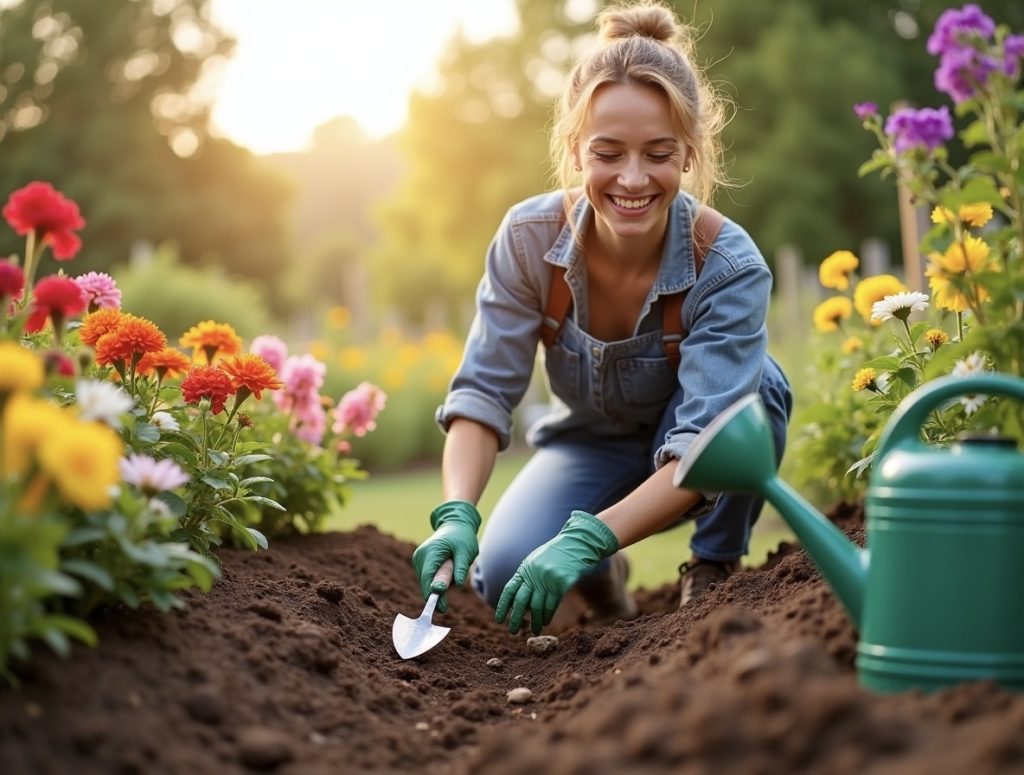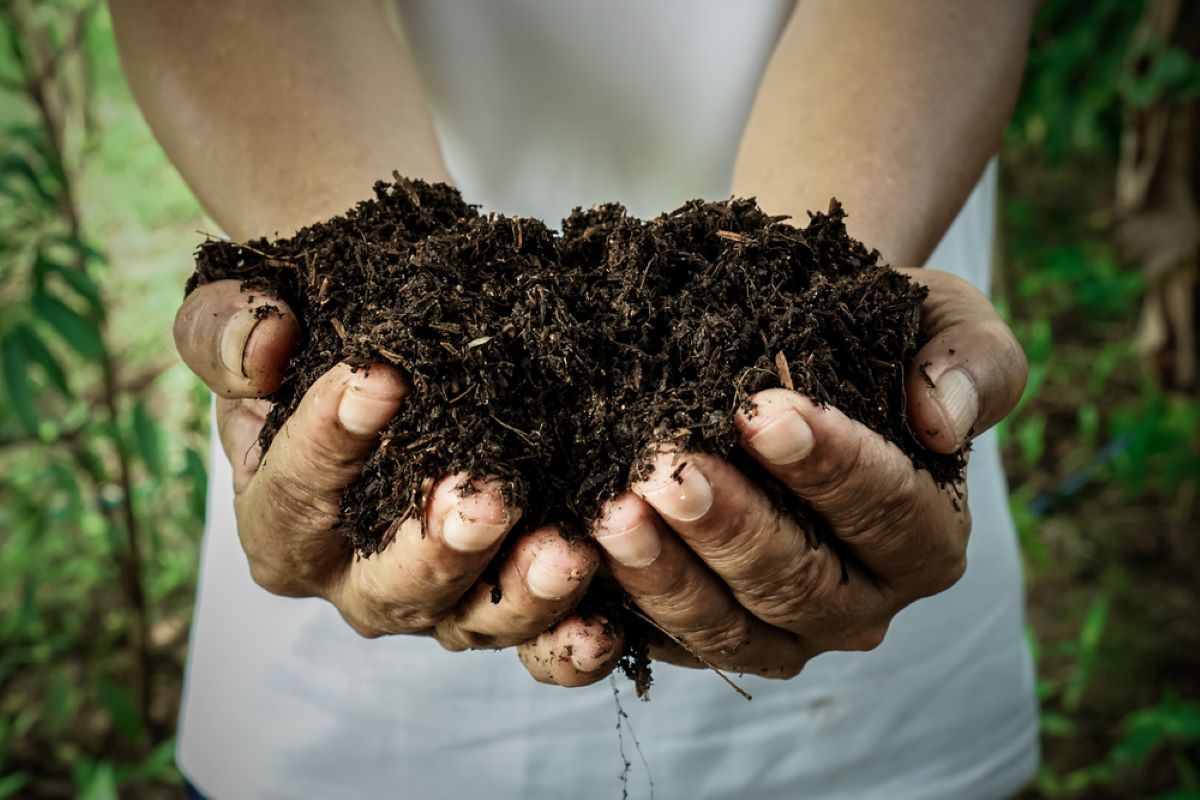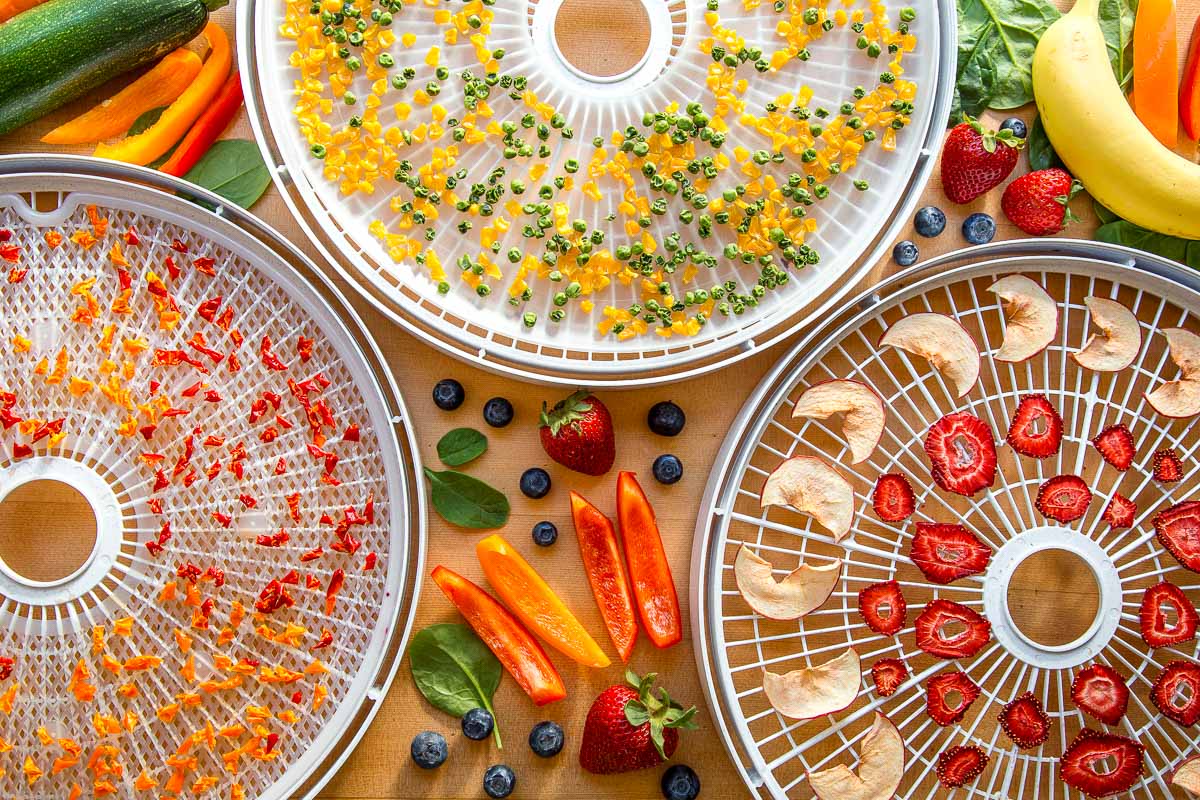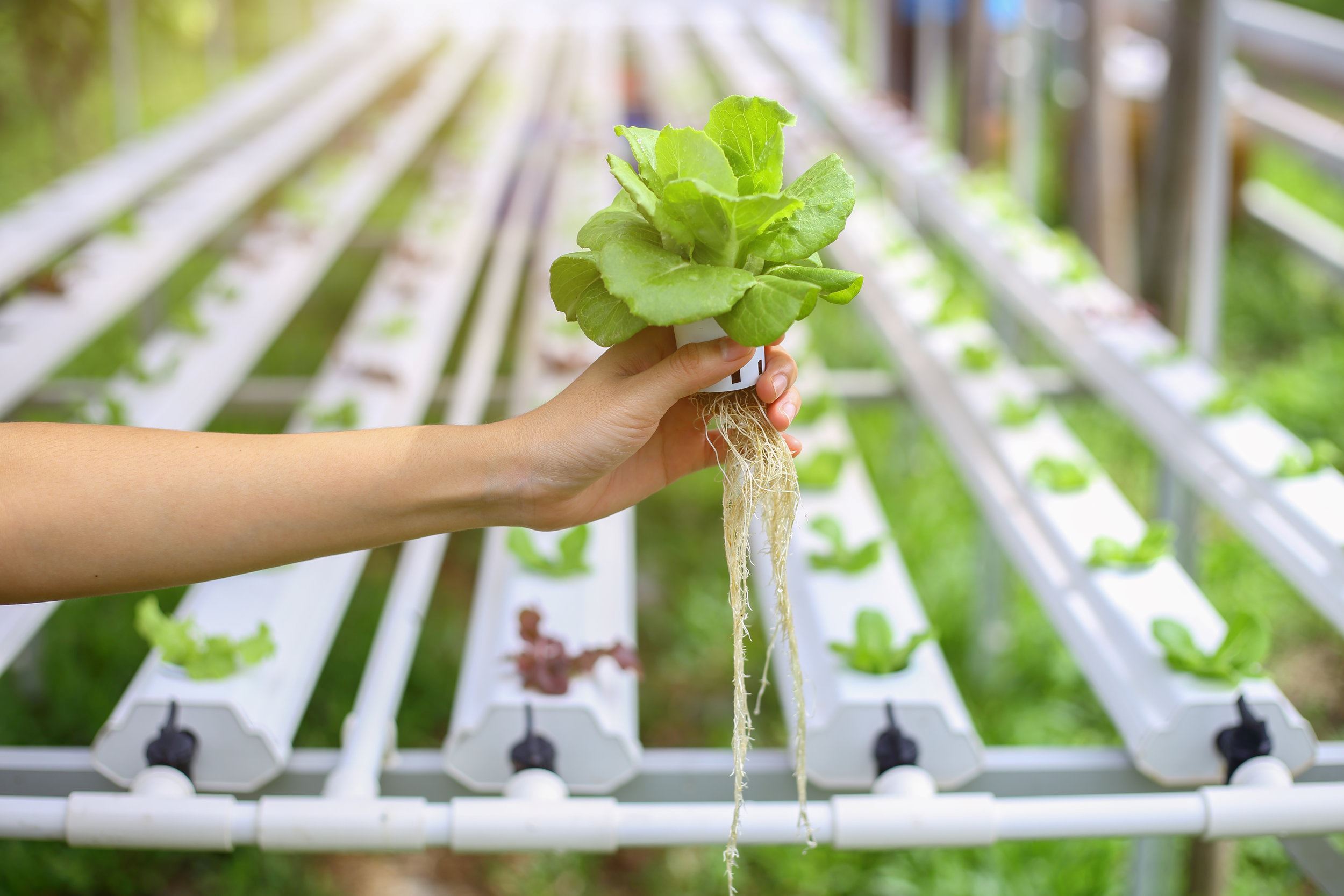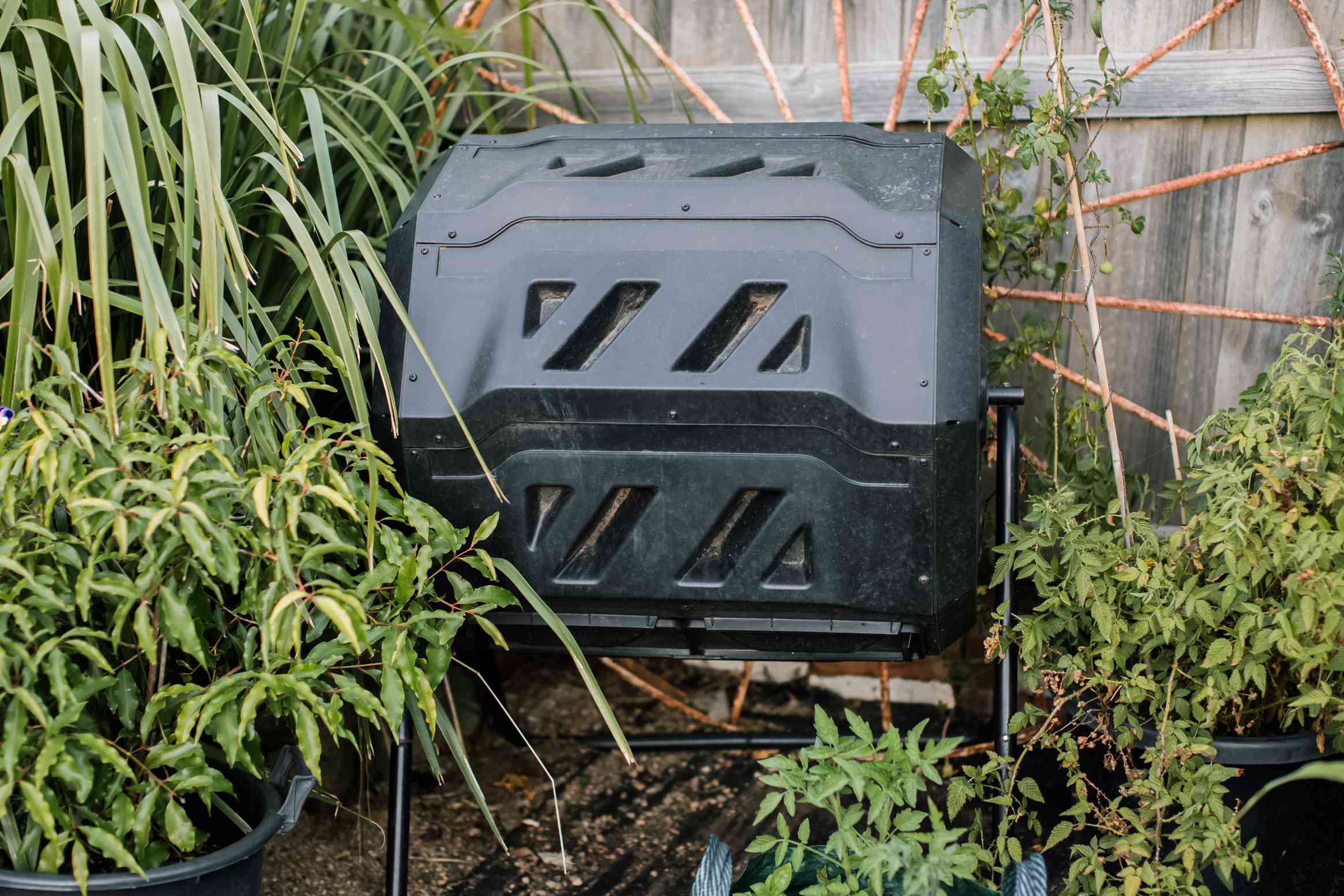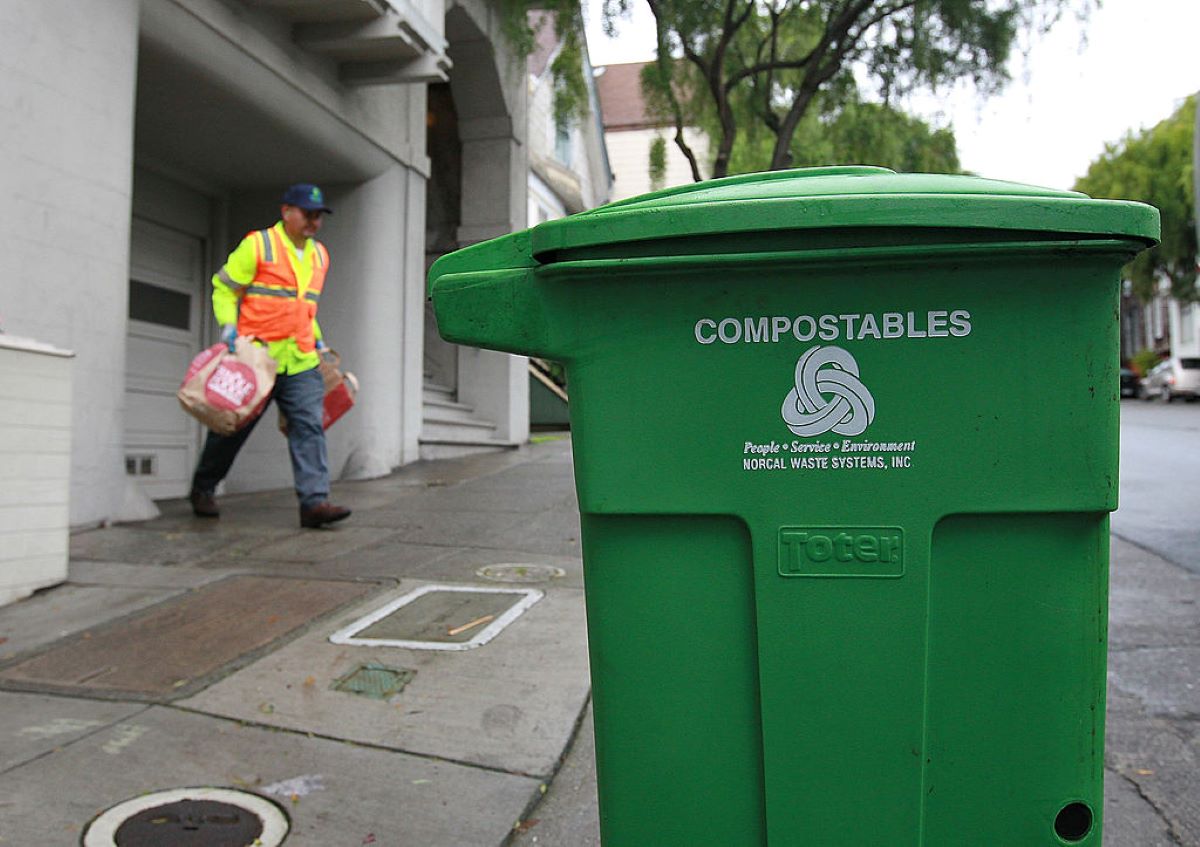Home>Gardening Techniques>DIY Projects>What Can I Use As A Compost Bin


DIY Projects
What Can I Use As A Compost Bin
Modified: January 22, 2024
Looking to start composting? Learn about DIY projects that you can use as a compost bin and turn your kitchen scraps into nutrient-rich soil.
(Many of the links in this article redirect to a specific reviewed product. Your purchase of these products through affiliate links helps to generate commission for Chicagolandgardening.com, at no extra cost. Learn more)
Table of Contents
Introduction
Welcome to the world of DIY projects! Whether you’re an avid gardener or looking for ways to live more sustainably, composting is an excellent practice to incorporate into your daily routine. It not only helps reduce waste but also transforms organic materials into nutrient-rich soil for your plants. To get started with composting, you’ll need a compost bin.
A compost bin is a container designed to hold and manage the composting process. It provides the ideal environment for beneficial microorganisms to break down organic matter, including food scraps, yard waste, and other compostable materials. Compost bins help accelerate the decomposition process, turning your kitchen and garden waste into black gold.
In this article, we’ll explore the benefits of using a compost bin and the various options available to suit your needs. From homemade bins to plastic, wooden, wire mesh, and tumbler bins, we’ll guide you through the decision-making process. So, let’s dive in and discover the wonderful world of composting!
Benefits of using a compost bin
Using a compost bin offers numerous advantages for both your garden and the environment. Let’s take a closer look at some of the benefits:
- Reduces waste: One of the most significant benefits of composting is the reduction of organic waste that would otherwise end up in landfills. By diverting this waste into a compost bin, you’re effectively reducing your environmental impact.
- Nutrient-rich soil: Composting transforms organic materials into nutrient-rich soil, often referred to as “black gold.” This compost can improve soil structure, enhance moisture retention, and provide essential nutrients for your plants. It’s a natural and sustainable way to nourish your garden.
- Improves soil health: Adding compost to your garden soil enhances its overall health. It increases soil fertility, promotes beneficial microbial activity, and improves soil structure. The result is healthier, more productive plants and fewer issues with pests and diseases.
- Reduces the need for chemical fertilizers: Compost is a natural fertilizer, rich in organic matter and essential nutrients. By using compost in your garden, you can reduce or eliminate the need for synthetic fertilizers. This not only saves money but also helps protect the environment from the harmful effects of chemical runoff.
- Encourages sustainability: Composting is a practical way to embrace sustainable living. By recycling organic waste and using it to nourish your garden, you’re contributing to a more circular economy and reducing your ecological footprint.
- Reduces greenhouse gas emissions: When organic waste breaks down in landfills, it produces methane, a potent greenhouse gas. By composting at home, you’re diverting this waste from landfills and significantly reducing methane emissions, thus mitigating climate change.
- Promotes biodiversity: Compost provides a habitat for diverse microorganisms and beneficial insects, such as earthworms. These organisms help aerate the soil, break down organic matter, and enhance soil fertility. A biodiverse garden is more resilient and can better resist pests and diseases.
With all these benefits, it’s clear that using a compost bin is an excellent choice for gardeners and environmentally conscious individuals. Now that we understand the advantages, let’s explore the different options for compost bins.
Available options for compost bins
When it comes to choosing a compost bin, there are several options available to suit a range of preferences and needs. Here are five popular choices:
- Homemade compost bins: If you’re feeling crafty or looking to save money, a homemade compost bin might be the way to go. You can create your compost bin using materials such as wooden pallets, wire mesh, or even repurposed containers. Homemade bins allow for customization and flexibility in size and design.
- Plastic compost bins: Plastic compost bins are lightweight, durable, and offer good insulation. They are available in various sizes and styles, from simple enclosed bins to tumbling systems. Plastic bins are easy to use and maintain, with features like removable access doors for easy harvesting of compost.
- Wooden compost bins: For a more natural and aesthetically pleasing option, wooden compost bins are a popular choice. These bins are usually made from rot-resistant wood, such as cedar or cypress, and come in different designs, including slatted or solid walls. Wooden bins provide good airflow and blend well with garden surroundings.
- Wire mesh compost bins: Wire mesh compost bins are affordable, easy to assemble, and provide excellent airflow. They consist of a sturdy wire frame that holds the compost material in place while allowing for oxygen circulation. These bins are suitable for larger composting areas and are often expandable if you need more space.
- Tumbler compost bins: Tumbler bins offer convenience and efficiency in composting. These bins have a rotating mechanism that allows for easy turning and mixing of compost materials. Tumblers help speed up the decomposition process and are ideal for those with limited space or who want a more low-maintenance composting method.
When choosing a compost bin, consider factors such as the amount of waste you generate, available space, desired composting method (e.g., batch or continuous), and aesthetic preferences. Additionally, look for features like proper ventilation, access doors, and pest control measures to ensure a successful composting experience.
Now that we’ve explored the different options available, let’s move on to discussing the factors to consider when choosing a compost bin.
Homemade compost bins
If you’re the DIY type or looking for a budget-friendly option, a homemade compost bin might be the perfect solution for you. Creating your own compost bin allows for customization and the ability to repurpose materials you already have. Here are some popular homemade compost bin ideas:
- Wooden pallet bin: One of the simplest and most accessible options is using wooden pallets to construct a compost bin. Simply stand the pallets upright and secure them together to form a square or rectangular enclosure. This design allows for good airflow and easy access to turn the compost.
- Wire mesh bin: Another easy and affordable option is constructing a compost bin using wire mesh. Simply shape the wire mesh into a cylinder or square shape and secure the ends together. This design allows for excellent airflow and fast decomposition.
- Repurposed container bin: Get creative by repurposing containers such as plastic storage bins or large buckets. Drill holes in the sides and bottom for aeration and drainage. These containers work well for small-scale composting and can easily fit in tight spaces such as balconies or small gardens.
- Three-bin system: For more advanced composting, consider building a three-bin system using wooden planks or pallets. This system involves three separate bins: one for adding fresh material, one for active decomposition, and one for mature compost. This setup allows for batch composting and easy management of different stages of decomposition.
When creating a homemade compost bin, ensure that it is sturdy and secure. Place it on a flat, well-drained surface and consider adding a layer of wire mesh or hardware cloth at the bottom to deter rodents. Remember to turn the compost regularly to promote decomposition and maintain a good balance of green and brown materials.
Homemade compost bins are a cost-effective and customizable option for composting enthusiasts. They offer the flexibility to experiment and adjust the bin’s size and design according to your specific needs. So, grab some materials and get ready to build your very own homemade compost bin!
Plastic compost bins
If you’re looking for a convenient and low-maintenance option for composting, plastic compost bins are a popular choice. These bins are made from durable plastic materials and offer several advantages. Here are some key features and benefits of plastic compost bins:
- Durability: Plastic compost bins are designed to withstand outdoor conditions and can last for many years. They are resistant to rot, rust, and pests, making them a long-lasting investment for your composting needs.
- Easy assembly: Most plastic compost bins come with easy-to-follow instructions and require minimal assembly. You can typically set up the bin within minutes, allowing you to start composting right away.
- Good insulation: Plastic bins provide insulation, which helps maintain optimal temperatures for composting. The insulation helps retain heat, promoting faster decomposition and allowing you to compost year-round, even in colder climates.
- Accessibility: Many plastic compost bins feature convenient access doors or removable panels. These access points make it easy to add new materials, turn the compost, and remove finished compost when ready.
- Various sizes and styles: Plastic compost bins are available in a range of sizes and styles to suit different composting needs. From small compact bins for urban dwellers to larger capacity bins for avid gardeners, there’s a plastic bin that fits your requirements.
- Low maintenance: Plastic compost bins require minimal maintenance compared to other types of bins. They do not rust or deteriorate, and cleaning is as simple as rinsing with water. Some plastic compost bins also have ventilation features to ensure proper airflow.
- Tumbling options: Some plastic compost bins feature a tumbling mechanism, allowing for easy turning and mixing of compost. This design accelerates the decomposition process by providing better aeration and nutrient distribution.
When choosing a plastic compost bin, consider factors such as size, capacity, and the number of people in your household. Additionally, check for features like locking mechanisms to keep pests out, UV resistance for durability under sunlight, and a practical design that suits your space and composting goals.
Plastic compost bins offer convenience and durability, making them a popular choice for many composting enthusiasts. Their easy assembly, low maintenance, and versatility make composting accessible to everyone, regardless of their gardening experience or available space.
Now that we’ve explored plastic compost bins, let’s move on to discussing another option: wooden compost bins.
Wooden compost bins
If you’re looking for a compost bin that blends seamlessly with your garden aesthetics and provides excellent functionality, a wooden compost bin might be the perfect choice. These bins are not only visually appealing but also offer several advantages. Let’s explore the features and benefits of wooden compost bins:
- Natural aesthetic: Wooden compost bins have a rustic and natural look that seamlessly integrates into garden settings. The warmth and beauty of wood can enhance the overall appeal of your outdoor space.
- Good airflow: Wooden bins typically feature slatted or solid walls with gaps between the boards, allowing for optimal airflow. This airflow facilitates decomposition by providing oxygen to the microorganisms responsible for breaking down organic matter.
- Durability: Wooden compost bins made from rot-resistant woods like cedar or cypress are built to withstand outdoor conditions. These woods are naturally resistant to decay, ensuring the longevity of the compost bin.
- Customization: Wooden compost bins offer the advantage of customization. You can adjust the size, height, and design of the bin to suit your specific needs. This flexibility allows for expansion or modification of the bin as your composting requirements change over time.
- Easy access: Many wooden compost bins feature access doors or removable panels, making it easy to add new materials, turn the compost, and harvest finished compost. This accessibility simplifies the composting process and saves you time and effort.
- Integration of composting worms: Wooden compost bins can easily accommodate composting worms such as red wigglers. Adding worms to your composting system can accelerate the decomposition process and produce nutrient-rich worm castings, known as vermicompost.
- Blend of form and function: Wooden compost bins combine aesthetics with functionality. They not only provide an efficient environment for composting but also add visual appeal to your garden. The natural wood texture and colors create an inviting composting area.
When choosing a wooden compost bin, consider factors such as the size of your garden, the amount of waste you generate, and the desired capacity of the bin. It’s essential to select a wood type that is resistant to rot and decay, ensuring the longevity of your compost bin.
Wooden compost bins offer an attractive and functional solution for composting enthusiasts. With their customizable design, durability, and natural look, they can be a beautiful addition to any garden.
Now that we’ve explored wooden compost bins, let’s move on to discussing another option: wire mesh compost bins.
Wire mesh compost bins
Wire mesh compost bins offer a simple and cost-effective solution for composting. These bins are constructed using wire mesh, providing excellent airflow and a lightweight design. Let’s explore the features and benefits of wire mesh compost bins:
- Affordability: Wire mesh compost bins are one of the most affordable options available. The materials used, such as galvanized or PVC-coated wire mesh, are commonly found at hardware stores and are budget-friendly.
- Good airflow: The open mesh design of these bins allows for superior airflow, promoting proper oxygen circulation within the compost pile. This airflow facilitates the decomposition process and helps maintain optimal moisture levels.
- Easy assembly: Wire mesh compost bins are quick and easy to assemble. Simply connect the panels of wire mesh to form a cylindrical or square shape, and secure them in place using clips or wire ties.
- Expandable: One of the advantages of wire mesh compost bins is their expandability. You can easily add additional panels of wire mesh to increase the capacity of the bin as your composting needs grow.
- Lightweight and portable: The lightweight nature of wire mesh compost bins makes them portable and easy to move around your garden if needed. This flexibility allows you to reposition the bin as you see fit or relocate it to a different area.
- Accessibility: Accessing your compost pile in a wire mesh bin is straightforward. Simply remove one or more panels to add fresh materials, turn the compost, or harvest finished compost. This ease of access ensures a user-friendly composting experience.
- Adaptability: Wire mesh compost bins can be adapted to fit specific composting needs. For example, you can attach a layer of plastic or shade cloth to the sides of the bin to retain moisture or protect the compost from excessive sunlight.
When choosing a wire mesh compost bin, consider the gauge and size of the wire mesh. Opt for a thicker gauge wire mesh to ensure durability and prevent bending or sagging over time. Additionally, choose a size that matches the amount of waste you generate and the available space in your garden.
Wire mesh compost bins are a cost-effective, practical, and easy-to-use option for composting. Their excellent airflow and expandability make them suitable for larger composting areas or those who generate larger amounts of organic waste.
Now that we’ve explored wire mesh compost bins, let’s move on to discussing another option: tumbler compost bins.
Tumbler compost bins
If you’re looking for a convenient and efficient composting method, a tumbler compost bin might be the perfect solution. Tumbler bins offer a unique design that allows for easy turning and mixing of compost. Let’s explore the features and benefits of tumbler compost bins:
- Accelerated composting: The rotating mechanism in tumbler compost bins helps accelerate the decomposition process. By regularly turning the compost, you provide better aeration and ensure even distribution of moisture and nutrients, resulting in faster composting.
- Easy turning: Tumbler bins are designed for easy turning and mixing of compost materials. Simply rotate the bin using the built-in handle or crank, eliminating the need for manual turning with a pitchfork or shovel.
- Controllable moisture: Tumbler bins allow you to control the moisture level of your compost more effectively. By easily rotating the bin, you can mix wet and dry materials, ensuring a well-balanced moisture content for optimal composting.
- No pests: Tumbler compost bins are generally better at preventing pests, as the enclosed design minimizes access to the compost pile. This reduces the risk of attracting rodents or animals that may be problematic in traditional open compost piles.
- Space-saving: Tumbler bins are compact and require less space compared to other types of compost bins. This makes them ideal for smaller gardens, balconies, or areas with limited outdoor space.
- Ease of use: Tumbler compost bins are user-friendly and require less physical effort compared to traditional composting methods. The rotating mechanism makes it easier to mix materials, eliminating the need for heavy lifting or turning manual compost piles.
- Pest control: Some tumbler compost bins are designed with features to deter pests further, such as secure latches and screens to prevent entry. This helps maintain a clean and pest-free composting environment.
When choosing a tumbler compost bin, consider the capacity of the bin and the ease of rotation. Look for bins with sturdy construction and a secure locking mechanism to prevent leaks or spills during rotation. Additionally, consider the overall durability and warranty offered by the manufacturer.
Tumbler compost bins offer an efficient and effortless composting method, particularly for those with limited space or physical capabilities. The ability to easily turn and mix the compost ensures faster decomposition and high-quality compost for your garden.
Now that we’ve explored tumbler compost bins, let’s move on to discussing key factors to consider when choosing a compost bin.
Factors to consider when choosing a compost bin
When it comes to choosing a compost bin, several factors should be taken into consideration to ensure you select the most suitable option for your needs. Here are some key factors to consider:
- Size and capacity: Determine how much organic waste you generate and the available space in your garden. Choose a compost bin that can adequately accommodate the volume of materials you plan to compost.
- Composting method: Consider the composting method that aligns with your preferences and lifestyle. Options may include batch composting, continuous composting, worm composting, or a combination thereof.
- Material: Different compost bins are made from various materials such as plastic, wood, or wire mesh. Each material has its pros and cons in terms of durability, aesthetics, insulation, and airflow. Select a material that suits your preferences and the specific needs of your composting process.
- Accessibility: Look for a compost bin that allows easy access for adding materials, turning the compost, and harvesting finished compost. Features like removable panels or access doors can greatly simplify the composting process.
- Ventilation: Adequate airflow is crucial for successful composting. Ensure the compost bin you choose has sufficient ventilation to allow oxygen to reach the compost pile. This facilitates the decomposition process and helps prevent unpleasant odors.
- Moisture retention: Consider how well the compost bin retains moisture. Proper moisture levels are necessary for the composting process. Look for bins that have features to control moisture, such as drainage holes or the ability to retain moisture in closed designs.
- Environmental impact: Consider the environmental impact of the compost bin material and manufacturing process. Look for bins made from recycled materials or those that can be recycled at the end of their lifespan. Choosing an eco-friendly option aligns with sustainable composting practices.
- Cost: Determine your budget for a compost bin. Prices can vary depending on the size, material, and features of the bin. Consider the long-term benefits and durability of the bin when assessing its value for money.
By considering these factors, you can make an informed decision when choosing a compost bin that meets your specific requirements. Remember, the right compost bin will make your composting journey more enjoyable and successful, resulting in nutrient-rich compost for your garden.
Now that we’ve explored important factors to consider, let’s wrap up this article on DIY compost bins.
Conclusion
Composting is a rewarding and sustainable practice that allows you to transform kitchen scraps and yard waste into nutrient-rich soil for your garden. Choosing the right compost bin is essential for a successful composting journey. Throughout this article, we explored various options available to suit different preferences and needs.
From homemade bins to plastic, wooden, wire mesh, and tumbler bins, there is a wide range of choices. Homemade bins offer customization and creativity, while plastic bins provide durability and easy maintenance. Wooden bins blend beautifully with garden aesthetics, and wire mesh bins offer affordability and excellent airflow. Tumbler bins provide convenience and efficiency in composting.
When selecting a compost bin, consider factors such as size, capacity, material, accessibility, ventilation, and moisture retention. Also, think about the composting method that aligns best with your lifestyle and goals. These considerations will help you make an informed decision and choose a compost bin that suits your specific needs.
By composting, you reduce waste, improve soil health, promote sustainability, and contribute to a healthier environment. Compost bins provide the ideal environment for organic materials to break down, turning them into nutrient-rich soil amendments.
So, whether you’re a seasoned gardener or new to composting, the world of DIY compost bins has something for everyone. Start composting today and reap the benefits of this sustainable practice. Get creative, reduce waste, and watch your garden flourish with the help of your chosen compost bin.
